
![]()
|
|
"Environmentally Sensitive Area". Please be careful where you walk and try not to disturb the natural environment. For additional information please contact Tourism Saskatchewan. | ||
| Wood Mountain N.W.M.P. Post | |||
| GPS: | 49d 18.95m N | 106d 22.67m W | 2511 feet |
| Location: | 8 kms south of the town of Wood Mountain. | ||
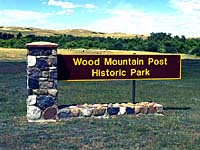
The North West Mounted Police (NWMP) first marched west in 1874. By all accounts, the historic journey was a nightmare of dust storms, blistering heat, mosquitoes, horseflies and bad water. So when the exhausted men reached Wood Mountain and found shady coulees, abundant game, fresh water -- and a Boundary Commission crew about to abandon a perfectly good post -- it's no wonder they simply moved in. | |||
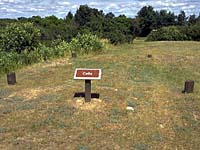
At the end of the 1873 season, Captain Anderson, Chief Astronomer, led a reconnaissance party to select the site for the first NWMP station in 1874. As the next season would begin at mile 430 (690 kms) and continue further westward, a main depot was required at this location. | |||
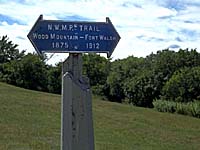
Anderson had heard of a Metis wintering camp in the area that might be suitable. He met a group of Sioux Indians, who had just left the hunter's camp, and they directed Anderson to it. | |||

After reaching Wood Mountain, Anderson referred to it as an oasis in the middle of the semi-desert. He found that it was ideally suited as a depot because it had good water, abundant grazing and wood for construction. When the Mounties took over the Wood Mountain post, it became the first NWMP post in the southwest. | |||
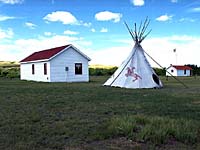
In early May 1874, George Crompton led a reconnaissance party to Wood Mountain and began constructing the depot buildings. On June 22, when the survey party arrived from Dufferin, the buildings were complete. | |||
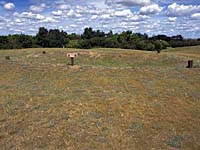
One hundred and twenty-five wagons loaded with supplies and equipment left Dufferin for Wood Mountain. This was a precaution in case the work could not be completed and would require another year. | |||
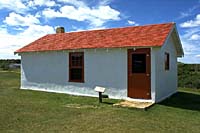
Feeding more than 200 men and their horses was a major task. | |||
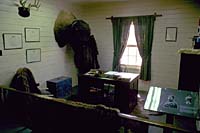
Captain Featherstonhaugh, Assistant Astronomer, recorded the daily ration allowed. | |||
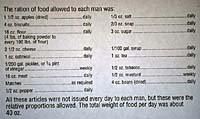
The total weight of food per man per day was about 40 ounces. | |||